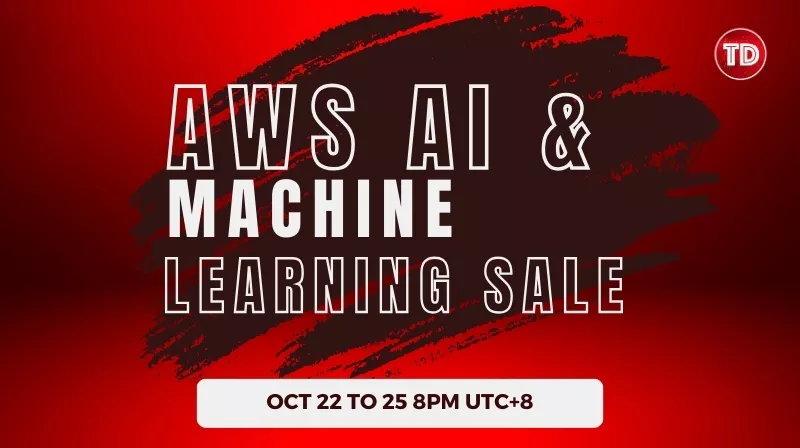Last updated on August 14, 2023
Instrumenting your Node.js application
- The AWS X-Ray SDK for Node.js provides middleware that you can use to instrument incoming HTTP requests. You need to add the SDK to your application’s dependencies, usually via package.json.
- Initialize the SDK client and add it to your application prior to declaring routes.
var AWSXRay = require('aws-xray-sdk'); AWSXRay.setDaemonAddress('host:port'); app.use(AWSXRay.express.openSegment('MyApp'));
3. Lastly, use the SDK exceptions after declaring routes.
app.get('/', function (req, res) { res.render('index'); }); app.use(AWSXRay.express.closeSegment());
Instrumenting your Java application
The AWS X-Ray SDK for Java provides a servlet filter that you can add to your application to start tracing incoming HTTP requests. First, if you are using Maven and Tomcat, you need to add the SDK as a dependency in your build configuration.
-
- Starting in release 1.3, you can instrument your application using aspect-oriented programming (AOP) in Spring. What this means is that you can instrument your application, while it is running on AWS, without adding any code to your application’s runtime.
*in a pom.xml file* <dependency> <groupId>com.amazonaws</groupId> <artifactId>aws-xray-recorder-sdk-core</artifactId> <version>version</version> </dependency>
2. Add a servlet filter to your deployment descriptor to trace incoming HTTP requests.
*in a web.xml file* <filter> <filter-name>AWSXRayServletFilter</filter-name> <filter-class>com.amazonaws.xray.javax.servlet.AWSXRayServletFilter</filter-class> </filter>
<filter-mapping> <filter-name>AWSXRayServletFilter</filter-name> <url-pattern>*</url-pattern> </filter-mapping>
Instrumenting your C# .Net application
- The AWS X-Ray SDK for .NET provides a message handler that you can add to your HTTP configuration to trace incoming HTTP requests. Add the AWSXRayRecorder package to your application with NuGet.
- Add the message handler to your HTTP configuration.
using Amazon.XRay.Recorder.Handler.Http; public static class AppConfig { public static void Register(HttpConfiguration config) { config.MessageHandlers.Add(new TracingMessageHandler()); } }
Instrumenting your Python application
- The X-Ray SDK for Python is a library for web applications that provides classes and methods for generating and sending trace data to the X-Ray daemon. You first download the SDK with pip.
pip install aws-xray-sdk
2. Add the Python (Django, Flask, etc) middleware to your code to instrument incoming HTTP requests.
Instrumenting your Go application
- The X-Ray SDK for Go is a set of libraries for Go applications that provide classes and methods for generating and sending trace data to the X-Ray daemon. You first download the SDK with the go get command.
go get -u github.com/aws/aws-xray-sdk-go/...
2. Use xray.Handler to instrument incoming HTTP requests.
func main() { http.Handle("/", xray.Handler(xray.NewFixedSegmentNamer(appname), http.HandlerFunc(func(w http.ResponseWriter, r *http.Request) { w.Write([]byte("Hello World!")) }))) http.ListenAndServe(":8000", nil) }
To avoid calling the service every time your application serves a request, the SDK sends the trace data to an X-Ray daemon, which collects segments for multiple requests and uploads them in batches. Use the following scripts to automatically install a daemon to your AWS host:
- Linux EC2
#!/bin/bash curl https://s3.dualstack.us-east-1.amazonaws.com/aws-xray-assets.us-east- 1/xray-daemon/aws-xray-daemon-2.x.rpm -o /home/ec2-user/xray.rpm yum install -y /home/ec2-user/xray.rpm
2. Windows EC2
<powershell> if ( Get-Service "AWSXRayDaemon" -ErrorAction SilentlyContinue ) { sc.exe stop AWSXRayDaemon sc.exe delete AWSXRayDaemon } $targetLocation = "C:\Program Files\Amazon\XRay" if ((Test-Path $targetLocation) -eq 0) { mkdir $targetLocation } $zipFileName = "aws-xray-daemon-windows-service-2.x.zip" $zipPath = "$targetLocation\$zipFileName" $destPath = "$targetLocation\aws-xray-daemon" if ((Test-Path $destPath) -eq 1) { Remove-Item -Recurse -Force $destPath } $daemonPath = "$destPath\xray.exe" $daemonLogPath = "$targetLocation\xray-daemon.log" $url =
"https://s3.dualstack.us-east-1.amazonaws.com/aws-xray-assets.us-east- 1/xray-daemon/aws-xray-daemon-windows-service-2.x.zip" Invoke-WebRequest -Uri $url -OutFile $zipPath Add-Type -Assembly "System.IO.Compression.Filesystem" [io.compression.zipfile]::ExtractToDirectory($zipPath, $destPath) New-Service -Name "AWSXRayDaemon" -StartupType Automatic -BinaryPathName "`"$daemonPath`" -f `"$daemonLogPath`"" sc.exe start AWSXRayDaemon </powershell>
3. ECS
a. You can simply pull the Docker image that you can deploy alongside your application.
docker pull amazon/aws-xray-daemon
b. Or create a folder and download the daemon.
mkdir xray-daemon && cd xray-daemon curl https://s3.dualstack.us-east-1.amazonaws.com/aws-xray-assets.us -east-1/xray-daemon/aws-xray-daemon-linux-2.x.zip -o ./aws-xray-daemon-linux-2.x.zip ~/xray-daemon$ unzip -o aws-xray-daemon-linux-2.x.zip -d .
c. Then, create a Dockerfile with the following content.
*~/xray-daemon/Dockerfile* FROM ubuntu:version COPY xray /usr/bin/xray-daemon CMD xray-daemon -f /var/log/xray-daemon.log &
d. Finally, build the image with docker build
docker build -t xray
4. Elastic Beanstalk
-
- X-Ray daemon is already built-in in Elastic Beanstalk. Enable it through a configuration file placed under ebextensions or through the console settings.
# .ebextensions/xray-daemon.config option_settings: aws:elasticbeanstalk:xray: XRayEnabled: true
5. Lambda
-
- X-Ray automatically runs in the background when you enable tracing for your functions.
References:
https://us-east-1.console.aws.amazon.com/xray/home?region=us-east-1#/getting-started
https://docs.aws.amazon.com/xray/latest/devguide/xray-daemon.html















